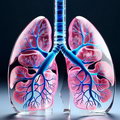
Regenerative medicine holds the promise of not just managing symptoms but addressing the root causes of various health conditions. Unlike traditional approaches, which may offer temporary relief, regenerative therapies aim to initiate a natural healing process within your body.
Whether you're recovering from an injury or seeking alternatives to invasive procedures, regenerative medicine at RegMed Georgia is designed to rejuvenate and restore, promoting sustained well-being.
For musculoskeletal injuries, arthritis, neurological issues and more, conventional methods often rely on surgery, medication management or joint replacement. While these can provide relief, many patients find symptoms return or new issues arise from lifelong dependency on pharmaceuticals. Surgical recovery takes time and complications are always a risk.
Regenerative therapies tap into the innate power of the body's ability to repair itself through stem cells and growth factors. Rather than masking pain or replacing anatomy, our goal is restoring full function naturally. Procedures introduce healing elements that promote tissue regeneration from within. You become your own best medicine through exposure to factors your body already knows how to use.
Utilizing only tiny needles or catheters, our same-day outpatient protocols cause minimal discomfort and risk compared to operating room procedures. They empower patients to participate in healing through lifestyle rather than rely solely on external interventions. Most return to normal activities right away rather than lengthy down time.
Our regenerative model works on the overall health of the body, while other options target individual problems. To achieve holistic recovery, we focus on cellular signaling that supports neurological, musculoskeletal and intrinsic healing. Utilizing minimally invasive techniques and focusing on all-natural methods, our procedures can often avert surgical intervention. Active rehabilitation improves quality of life even after formal treatment has ended. With the right guidance, harnessing the body's healing power can do wonders.
At the heart of regenerative medicine lies the incredible potential of stem cells. Stem cells are undifferentiated cells, meaning they have the ability to develop into various specialized cell types in the body. They possess two key characteristics: self-renewal, the ability to replicate and create more stem cells, and pluripotency, the ability to differentiate into different cell types.
There are four main sources of stem cells: embryonic tissues, fetal tissues, adult tissues, and induced pluripotent stem cells (iPSCs), which are created by reprogramming adult cells, offering a non-controversial alternative to embryonic stem cells.
Stem cell differentiation is a fascinating process where undifferentiated stem cells mature into specialized cell types such as neurons, muscle cells, or blood cells. This transformation is guided by complex networks of signals and genetic programming. Understanding this process is crucial for harnessing the potential of stem cells and directing their differentiation towards specific tissues.
Neurodegenerative diseases like Parkinson's and Alzheimer's pose significant challenges, but stem cell therapies offer hope for potential treatments. Stem cells can be coaxed into becoming specialized neurons, providing a possible avenue for replacing damaged brain cells and restoring function in affected individuals.
Cardiovascular diseases, including heart failure and coronary artery disease, are major causes of morbidity and mortality worldwide. Stem cell-based approaches, such as injecting stem cells into damaged heart tissue or stimulating the heart's own repair mechanisms, hold promise for regenerating cardiac tissue and improving heart function.
Injuries and degenerative conditions affecting bones, cartilage, and muscles can greatly impact a person's quality of life. Stem cell therapies offer potential solutions by promoting tissue regeneration and repair. Whether it's repairing cartilage in joints, healing fractures, or regenerating muscle tissue, stem cells show promise in revolutionizing orthopedic and musculoskeletal treatments.
Through regenerative medicine and the incredible versatility of stem cells, we are entering an era of medical possibilities that could change lives. With ongoing research and advancements, these innovative therapies will likely continue to reshape the landscape of healthcare, offering new hope and improved outcomes for countless individuals.

Regenerative medicine, a rapidly evolving field at the intersection of biology and medicine, holds great promise for revolutionizing healthcare by harnessing the power of stem cells.
By understanding the remarkable capabilities of stem cells and the advancements in regenerative medicine, we can envision a future where debilitating diseases are conquered, damaged tissues are rejuvenated, and human health is transformed.

Stem cells, with their unique ability to differentiate into various specialized cell types, offer immense potential for tissue repair, disease treatment, and even organ regeneration.
One of the most exciting breakthroughs in stem cell research is the development of organoids, miniature organs grown in the lab using stem cells. These three-dimensional structures mimic the complexity and functionality of real organs, allowing researchers to study diseases and test drug candidates in a more accurate and controlled environment. Organoids offer new possibilities in personalized medicine and the potential to revolutionize drug discovery and development.
Advancements in gene editing technologies, such as CRISPR-Cas9, have opened up new avenues in stem cell research. These tools enable scientists to precisely modify the genetic material of stem cells, enhancing their therapeutic potential and accelerating research progress.
Gene editing has the potential to correct inherited genetic disorders and enhance the safety and efficacy of stem cell therapies, paving the way for future breakthroughs in regenerative medicine.
Researchers are exploring the use of biomaterials and scaffold engineering to enhance the regenerative capabilities of stem cells. By providing structural support and mimicking the natural extracellular environment, these materials can guide and stimulate the growth of new tissues and organs. Innovations in biomaterials and scaffold engineering hold great promise in optimizing the therapeutic potential of stem cells and improving outcomes in regenerative medicine.
Stem cell transplantation has shown significant success in various medical conditions, including blood disorders, immune deficiencies, and certain types of cancer. The ability of stem cells to regenerate and replace damaged or malfunctioning tissues offers hope for patients with previously untreatable conditions. As research advances and more clinical trials are conducted, the potential of stem cell transplantation is likely to expand further, providing new treatment options for a wider range of diseases.
Stem cells hold promise in the field of cancer treatment. They have the potential to target and kill cancer cells selectively, making them a potential alternative or complement to traditional cancer therapies like chemotherapy and radiation. Stem cells can also serve as carriers for targeted drug delivery, minimizing side effects and improving treatment efficacy. The ongoing research in this area brings hope for more effective and personalized cancer treatments in the future.
Regenerative medicine and stem cell research are experiencing rapid growth, with several promising areas of research emerging. These include the use of induced pluripotent stem cells (iPSCs), which are derived from adult cells and possess similar capabilities to embryonic stem cells. Other areas of interest include tissue engineering, organ transplantation, and neuroregeneration. Continued exploration of these trends and innovative approaches will likely lead to further breakthroughs and potential medical applications.
Regenerative medicine and stem cell research offer immense promise in revolutionizing healthcare and providing new treatments for currently incurable diseases. While there are ethical and regulatory challenges, the field continues to advance through breakthroughs such as organoids, gene editing technologies, and biomaterials. Successful stem cell transplantation cases and the potential applications in cancer treatment showcase the clinical impact of these advancements.

As research progresses and new areas of exploration emerge, the future of regenerative medicine holds tremendous potential to improve and save countless lives. So, let's keep our stem cells crossed for a brighter and more regenerative future!
Regenerative therapy is a medical treatment which repairs or replaces damaged tissues in the body. It holds the promise of not just managing symptoms but addressing the root causes of various health conditions. Regenerative treatments seek to stimulate the body's own healing process, as opposed to conventional approaches, which only offer short-term relief.
A stem cell is a type of cell that has the potential to develop into any kind of cell in the body. As a result, stem cells have the potential to regenerate and repair damaged tissues and organs. Stem cells can be found in bone marrow, fat tissue, umbilical cord blood, and other parts of the body. They are either injected or implanted into the damaged area, where they differentiate into specific cells needed for repair.
Regenerative therapy works by using stem cells or other regenerative agents to stimulate the body's natural healing process and promote tissue regeneration. Stem cells or other regenerative agents are collected from a donor or the patient's own body, and then injected into the damaged tissue, where they replace damaged cells and promote healing.
Regenerative therapy using stem cells has the potential to address a wide range of health conditions, including orthopedic injuries, autoimmune disorders, neurodegenerative diseases, spinal cord injuries, heart disease, diabetes, Parkinson's disease, osteoarthritis, and more.
The effectiveness of regenerative therapy using stem cells varies depending on the type of condition being treated and the individual patient. Some patients have experienced significant improvements in their condition, while others may not see as much progress. Hopefully, recent advancements in research and clinical trials will soon provide a clearer answer to the reason for these gaps in treatment.
Like any medical procedure, there are potential risks associated with regenerative therapy, such as infection or rejection of the stem cells. However, the use of a patient's stem cells can minimize these risks. Extensive research and clinical trials have shown that regenerative therapy using stem cells is safe.
The use of embryonic stem cells has raised ethical concerns. However, adult stem cells, found in bone marrow, fat tissue, or other parts of the patient, do not pose ethical issues.
The potential for regenerative therapy using stem cells is vast, with ongoing research and clinical trials exploring its applications for various conditions and diseases. It has the potential to revolutionize the treatment of many chronic and degenerative conditions that currently have no cure. The field of regenerative therapy is constantly evolving and advancing. With continued development, it has the potential to greatly improve the treatment of various diseases and injuries and potentially lead to new cures.















